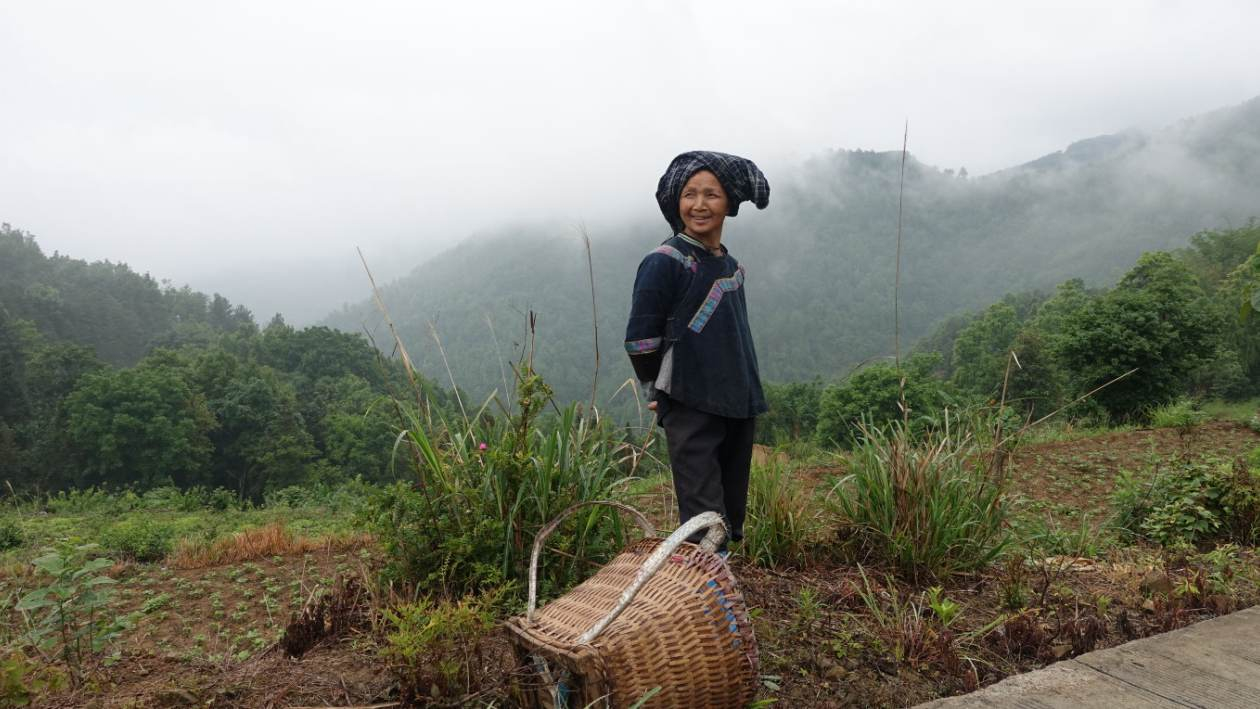When thinking of the poverty-stricken areas in the mountainous regions, in the distant southwest provinces in China, what kind of images might pop into your mind? The following one?
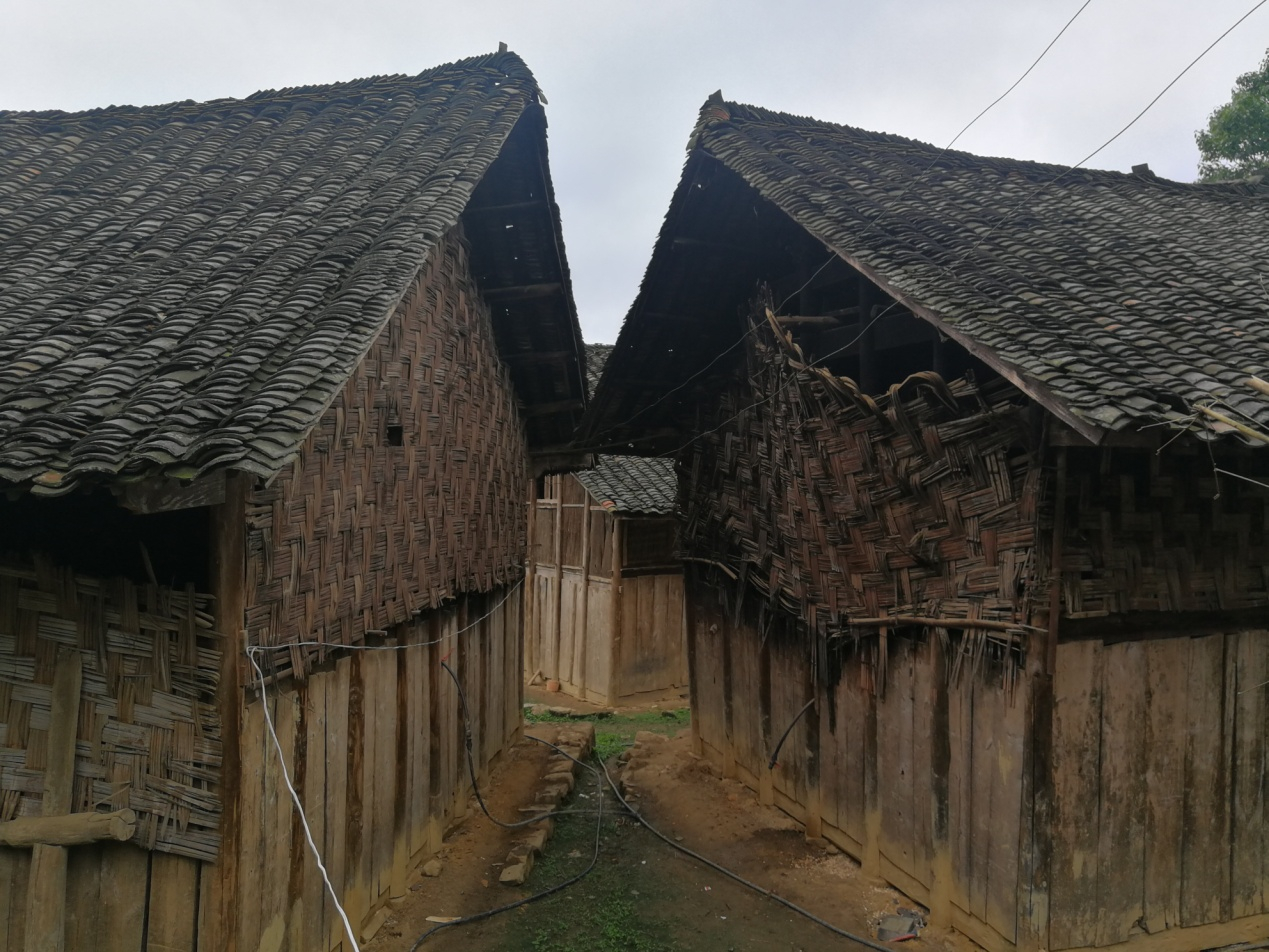
Henhouses in Erni Village, Dayi Town, Wangmo County, Xingyi City, Guizhou Province, May 9, 2019. /CGTN Photo
Henhouses in Erni Village, Dayi Town, Wangmo County, Xingyi City, Guizhou Province, May 9, 2019. /CGTN Photo
Before my latest trip to one of China's state-level poverty counties, I had the typical prototype. But don't be mistaken here, these wooden shacks in the above picture are not for villagers; instead, they are henhouses of a poverty alleviation project.
After a nearly 4-hour flight from Beijing to Xingyi City in southwestern Guizhou Province and another 3-hour drive through the mountains, together with a group of delegates of the Western Returned Scholars Association (WRSA)/the Overseas-educated Scholars Association of China, I finally got a chance to visit a state-level poverty county and try to find out more about how the poverty alleviation efforts there have progressed and what actions could be further taken to help the locals.
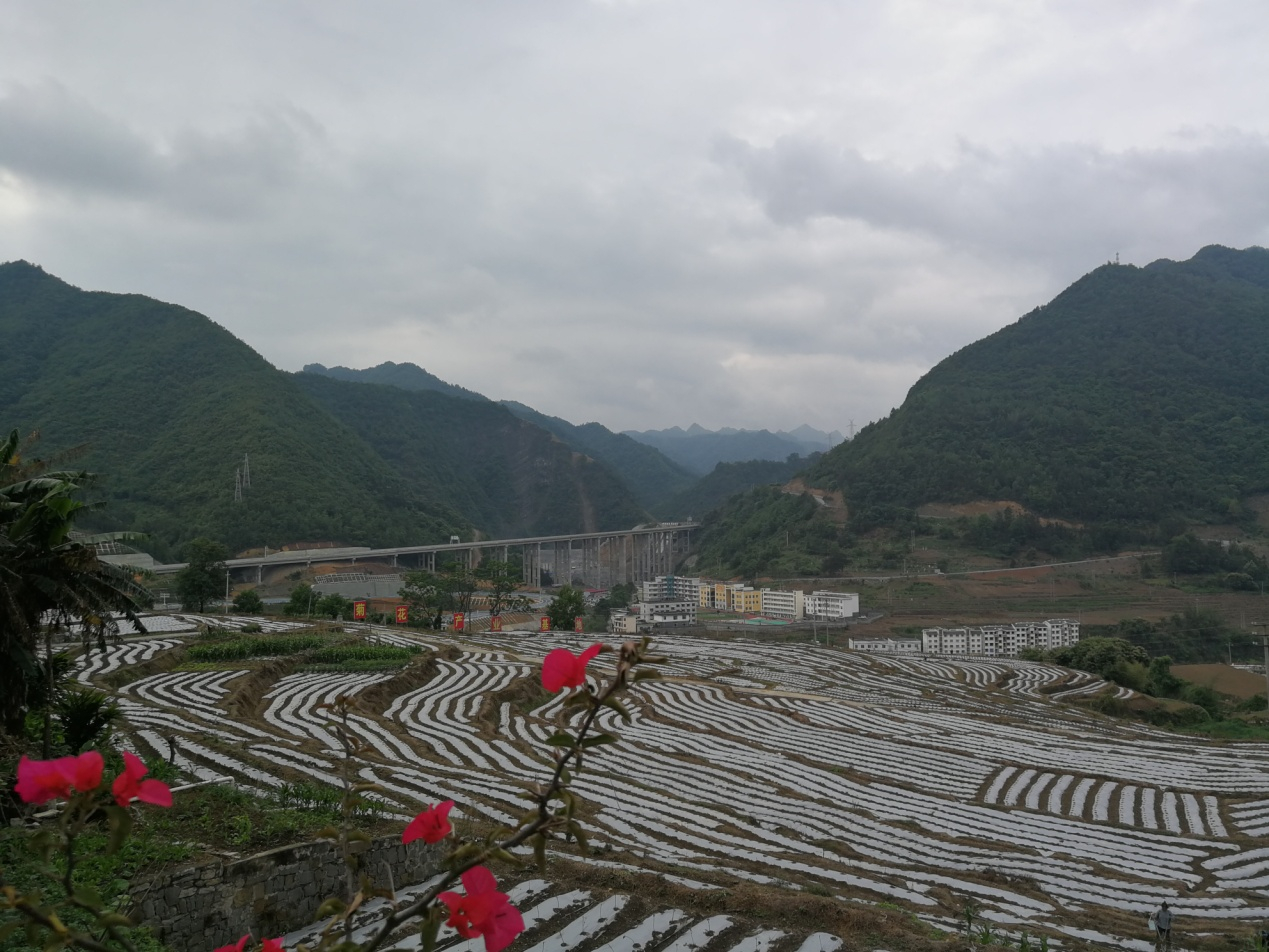
Roads run through mountains in Xintun Village, Wangmo County, Xingyi City, Guizhou Province, May 8, 2019. /CGTN Photo
Roads run through mountains in Xintun Village, Wangmo County, Xingyi City, Guizhou Province, May 8, 2019. /CGTN Photo
About Dayi
Dayi Town in Wangmo County is one of China's 559 state-level poverty counties (as of February 2019). Villagers in Dayi mainly consist of Bouyei, Miao, Yao, Dong and Han nationalities, with Bouyei taking more than half of a population of over more than 30,800. Hence the name of the town comes from Bouyei language which means "beautiful hometown."
Today, there are still 1,173 families listed as poverty households, including 4,381 villagers in Dayi. To fulfill the national target of lifting another 10 million people out of poverty, here in Dayi a plan of raising 3,300 of the 4,381 out of poverty has been set for 2019. Erni Village and Changtian Village are the two targeted ones to be ticked out from the poverty list.
A field tour into poverty villages
To get first-hand understanding of the poverty situation, how those ongoing poverty alleviation projects are undergoing, and what further supports are needed, the delegates of the WRSA took a field tour to several villages.
The first leg was at Shuangba Village, where 540 villagers from 142 households are still living in poverty. The village covers an area of 16.56 square kilometers, with mountains accounting for some 90 percent of it.
Based on its natural conditions, and with several rounds of research, a chestnut trees planting project was finally decided as the most efficient way to unite the poor villagers and encourage them to create a better life with their own hands.
Since the project got started in 2016, some 100,000 chestnut trees have been planted in the village. All the saplings were given to the villagers by a food processing company. After the trees bear fruits, the company will buy back all the chestnuts at a reasonable price.
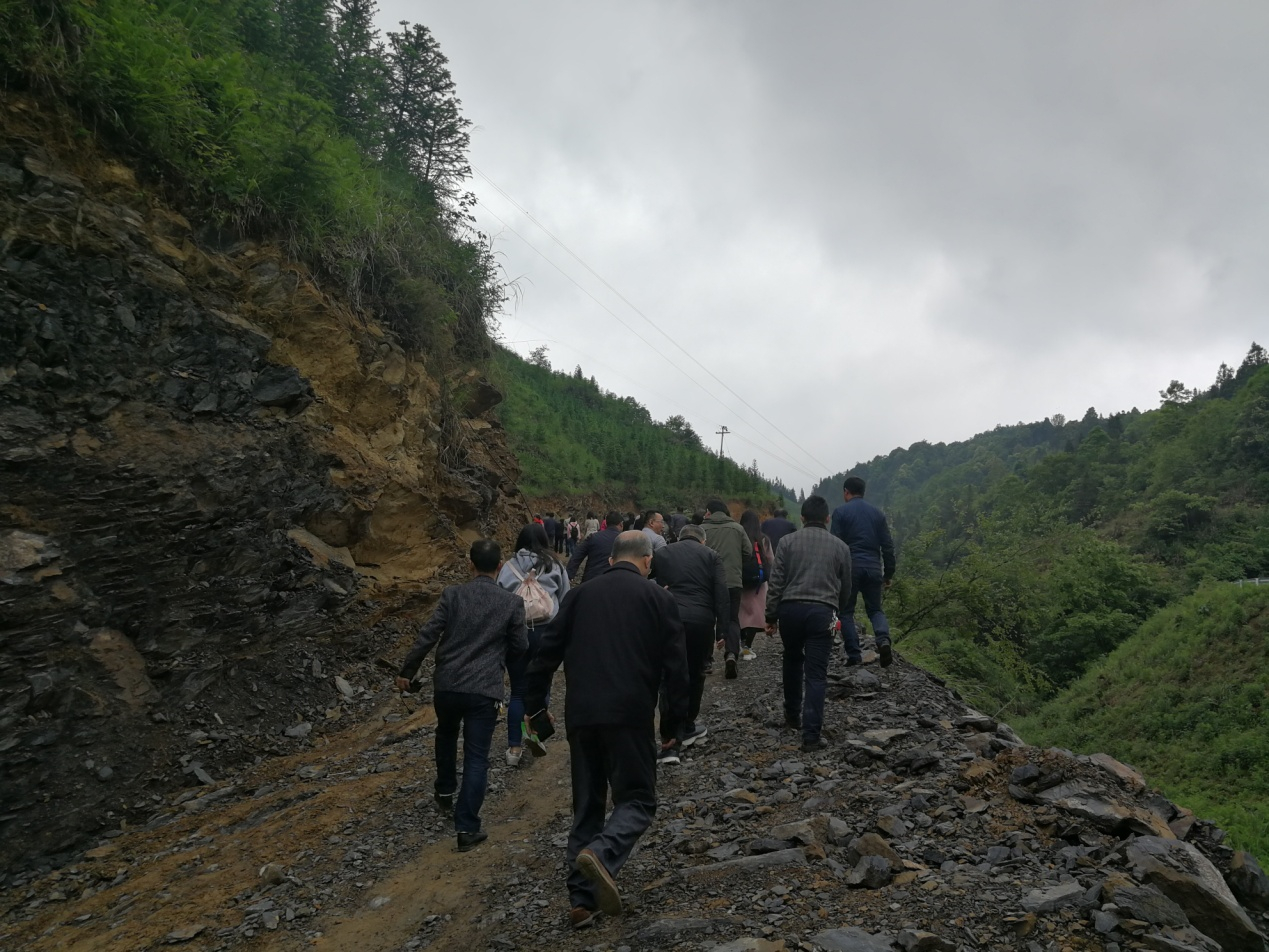
Delegates climbing towards the chicken farm on top of a mountain in Erni Village, Dayi Town, Wangmo County, Xingyi City, Guizhou Province, May 9, 2019. /CGTN Photo
Delegates climbing towards the chicken farm on top of a mountain in Erni Village, Dayi Town, Wangmo County, Xingyi City, Guizhou Province, May 9, 2019. /CGTN Photo
As it will take several years before the harvest, free seedlings of peanut and soybean are also provided for the villagers to see them through the current difficult times.
But due to a lack of fertilizers and expertise in engrafting, the yields of chestnuts are not as high as expected. The villagers are seeking further support in these fields.
Some 10 kilometers away lies Erni Village, where the poverty alleviation project of raising chickens mentioned above have helped many locals: The local government allocated 20,000 yuan (about 3,000 U.S. dollars) to each poverty household for them to buy their shares of the farm, which would win them some dividends on a yearly basis, and the farm also provides them job opportunities, so they can have a monthly income.
Shi Jie owns the chicken farm, who himself was a returned overseas student. After joining in the poverty alleviation research and support team, also organized by the WRSA in 2017, he was touched by the poor conditions of the locals and decided to stay to do his bit.
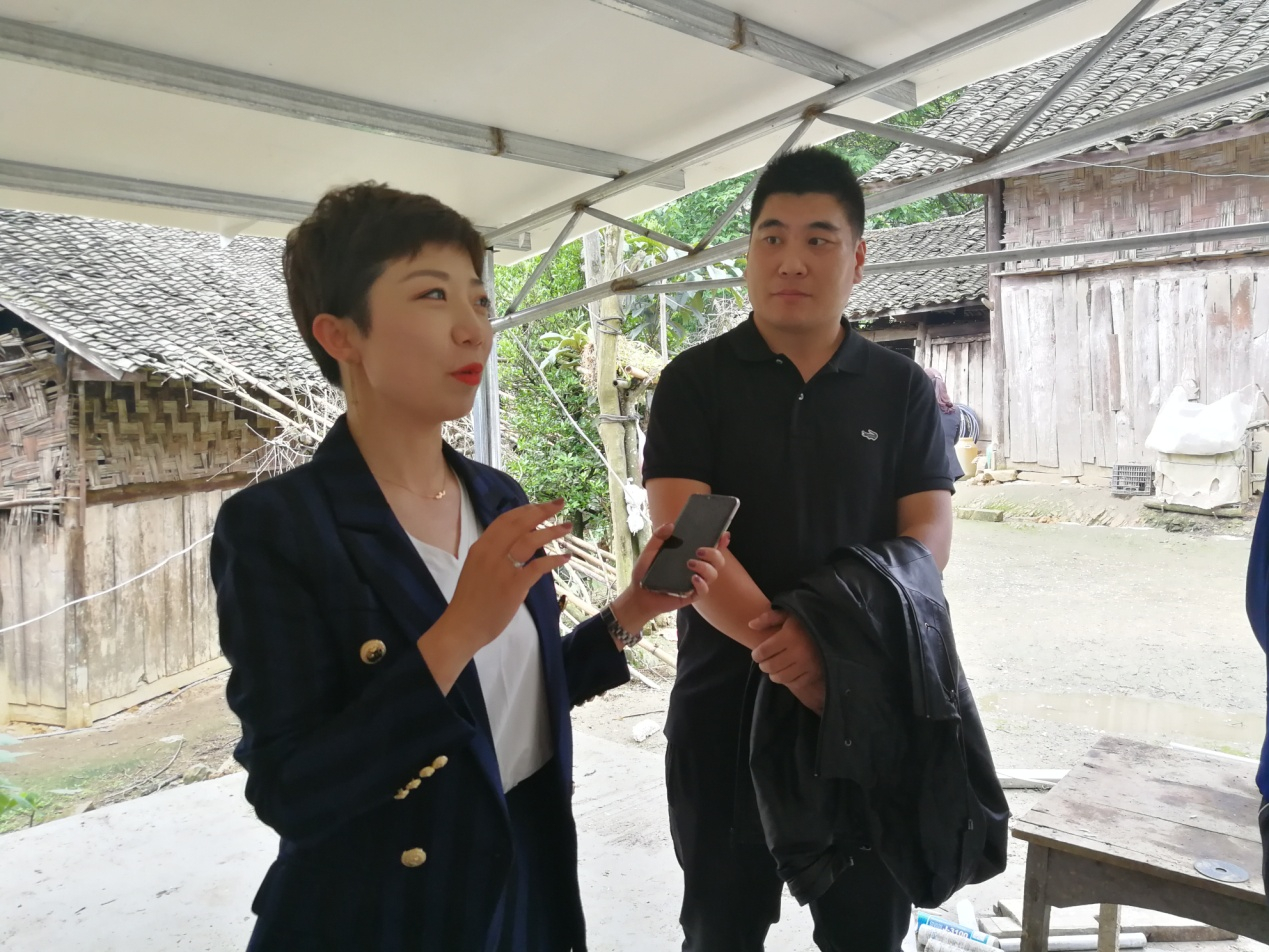
Shi Jie and his wife, a Guizhou native, introduce the project to the delegates, May 9, 2019. /CGTN Photo
Shi Jie and his wife, a Guizhou native, introduce the project to the delegates, May 9, 2019. /CGTN Photo
Down at the foot of the mountain, a cherry tree planting base, a cooperative society by local government and villagers has obtained some 140,000 yuan (or about 20,500 U.S. dollars) financial aid and to the end of 2018, 100 mu (or 67,000 square meters) of cherry trees had been planted.
The chief of the village is expecting to build the base into an agri-tourism type of farmhouse to attract urban dwellers to stop over the weekend to enjoy the fresh air, clean water and organic farming produce. He envisioned this would be the best choice for the locals to have an income while maintaining and protecting the superb excellent ecosystem there.
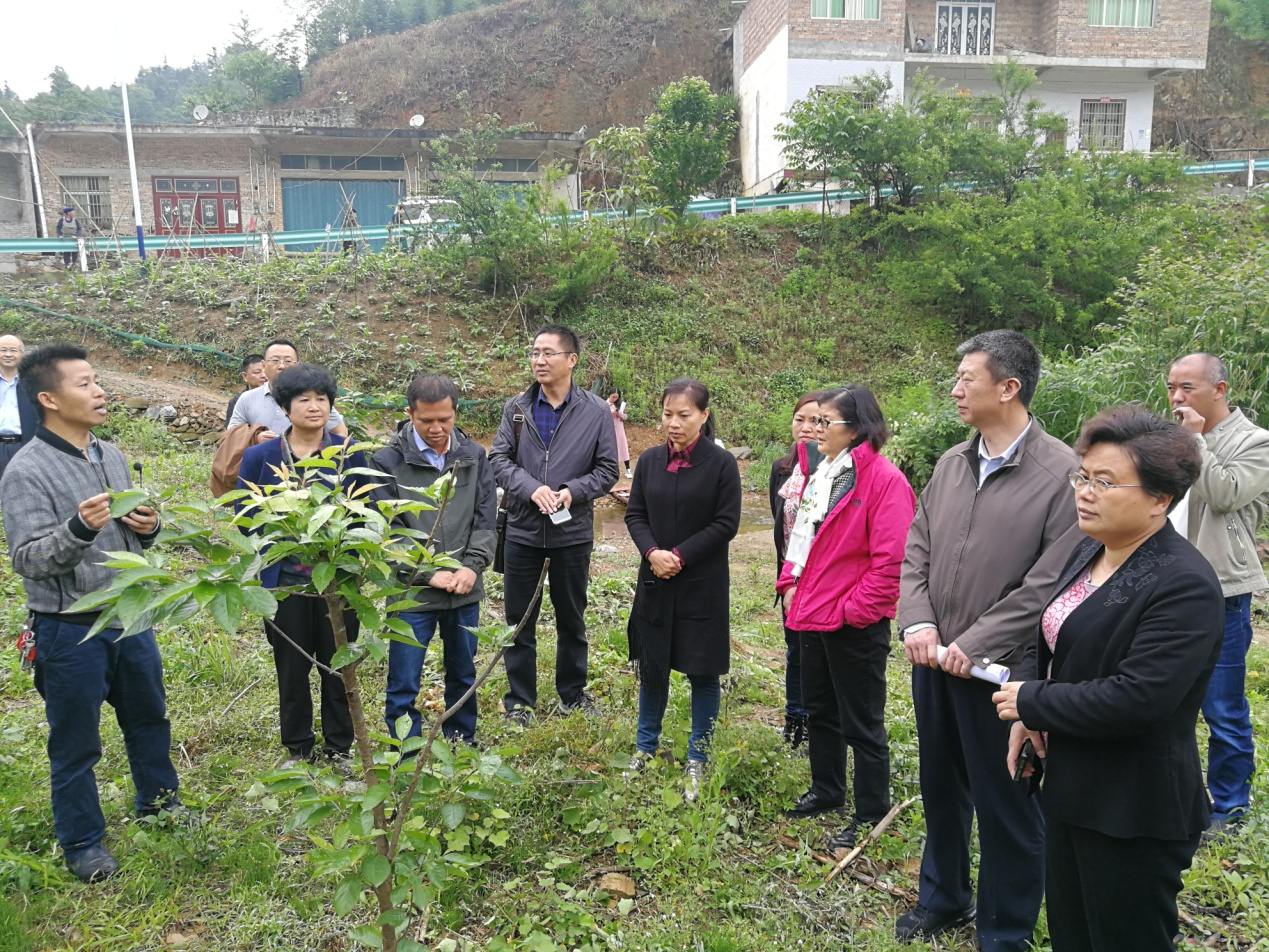
Chief of Erni Village introducing the project to the delegates, May 9, 2019. /CGTN Photo
Chief of Erni Village introducing the project to the delegates, May 9, 2019. /CGTN Photo
To make their dream come true, they also need more support in financial aid to buy fertilizers, expertise in engrafting and other farming techniques, etc.
Boosting education
Help from others can only solve their current problems – case by case. But as the old saying goes: Give a man a fish and you feed him for a day; teach a man to fish, and you feed him for a lifetime. To educate and foster talents of their own is the only way to solve their problems once and for all.
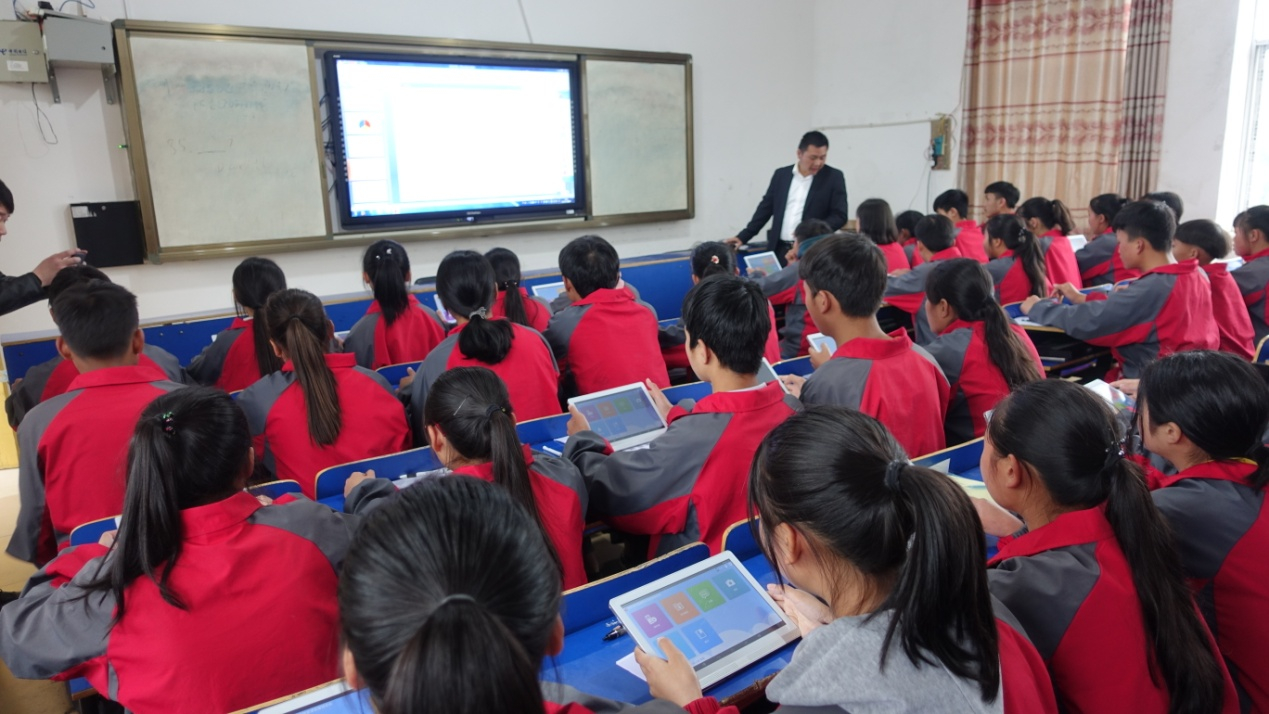
Seventh-grade students of Dayi Middle School received a donation of equipment and software from a company of a member of the WRSA in 2017, May 10, 2019. /CGTN Photo
Seventh-grade students of Dayi Middle School received a donation of equipment and software from a company of a member of the WRSA in 2017, May 10, 2019. /CGTN Photo
So the delegates also went into the schools and even kindergartens to check out whether the previously donated teaching equipment, IT classrooms and libraries are properly utilized and how they have helped the pupils, as well as listening to their further needs.
Providing better medical treatment
Medical care is also a huge burden for locals, but with the government's medical care package covering nearly all the citizens, including villagers in the mountainous areas, what they lack now is more of professional doctors and nurses, as well as advanced checking and treating instruments.
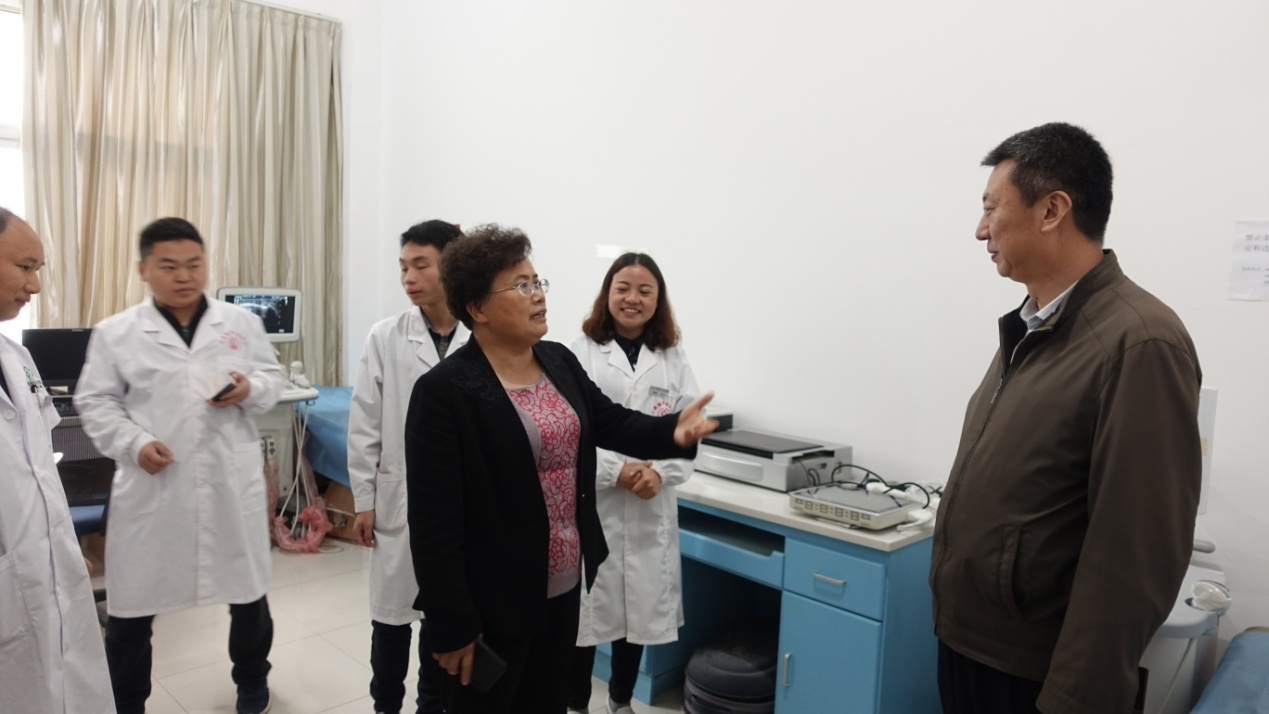
Delegates visit the local hospital and listen to their needs, May 9, 2019. /CGTN Photo
Delegates visit the local hospital and listen to their needs, May 9, 2019. /CGTN Photo
Finding out solutions and signing donating agreements
After visiting the villages, schools and hospitals, and knowing the details, and the existing problems, it's time to sit down together to find out what solutions WRSA members can mobilize with their own resources.
With the first-hand research and detailed discussions, on the following day, a batch of 11 donating agreements were signed between several companies and the locals – including smart classrooms, smart reading machines, iPads, 3D printer, color Doppler ultrasound machine, other medical equipment and medicines – for training for local teachers, medical staff and farmers, as well as cash for beekeeping farmers and buying fertilizers.
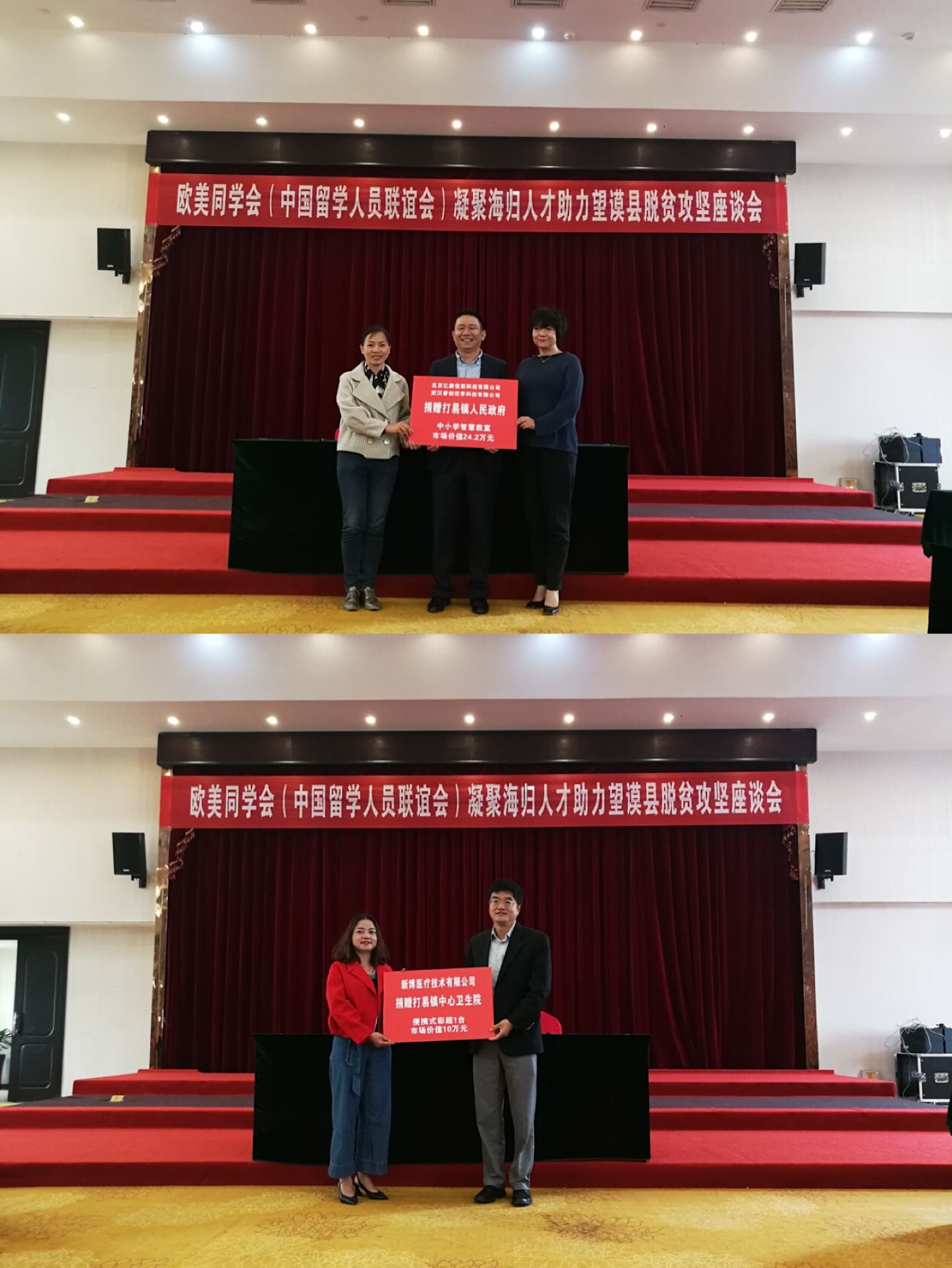
Donating ceremonies on poverty alleviation equipment or projects are held on May 10, 2019. /CGTN Photo
Donating ceremonies on poverty alleviation equipment or projects are held on May 10, 2019. /CGTN Photo
The WRSA is not in the government sector which oversees the poverty reduction work in China. It can, however, be taken as a "social force" or "semi-civil organization." The organization does not play the leading role in China's poverty alleviation campaigns, but instead, we can say it is a supplement to the government's efforts.
It is undeniable that China has made great progress in poverty reduction in the past several decades, especially since the reform and opening-up in 1978 – over 700 million Chinese have been lifted out of poverty, contributing over 70 percent poverty population alleviation to the world.
And this is indeed how China, with a combination of government's policies and measurements, joint efforts of all social forces, including organizations, enterprises, and individuals as well as the local people's wills and hard work, has activated the "nerve endings" of the whole society and achieved such a success in poverty alleviation.
China has set the national goal of becoming a "moderately prosperous society" by 2020, which means, by then, all rural residents living below the current poverty line are to be lifted out of poverty, and poverty to be eliminated from all poor counties and regions.
Here, I would like to join the local villagers to believe the day will come.
(Top image: The Bouyei woman, who owns the chestnut trees and peanut seedlings, stands in the field in Shuangba Village, Dayi Town, Wangmo County, Xingyi City, Guizhou Province, May 9, 2019. /CGTN Photo)

